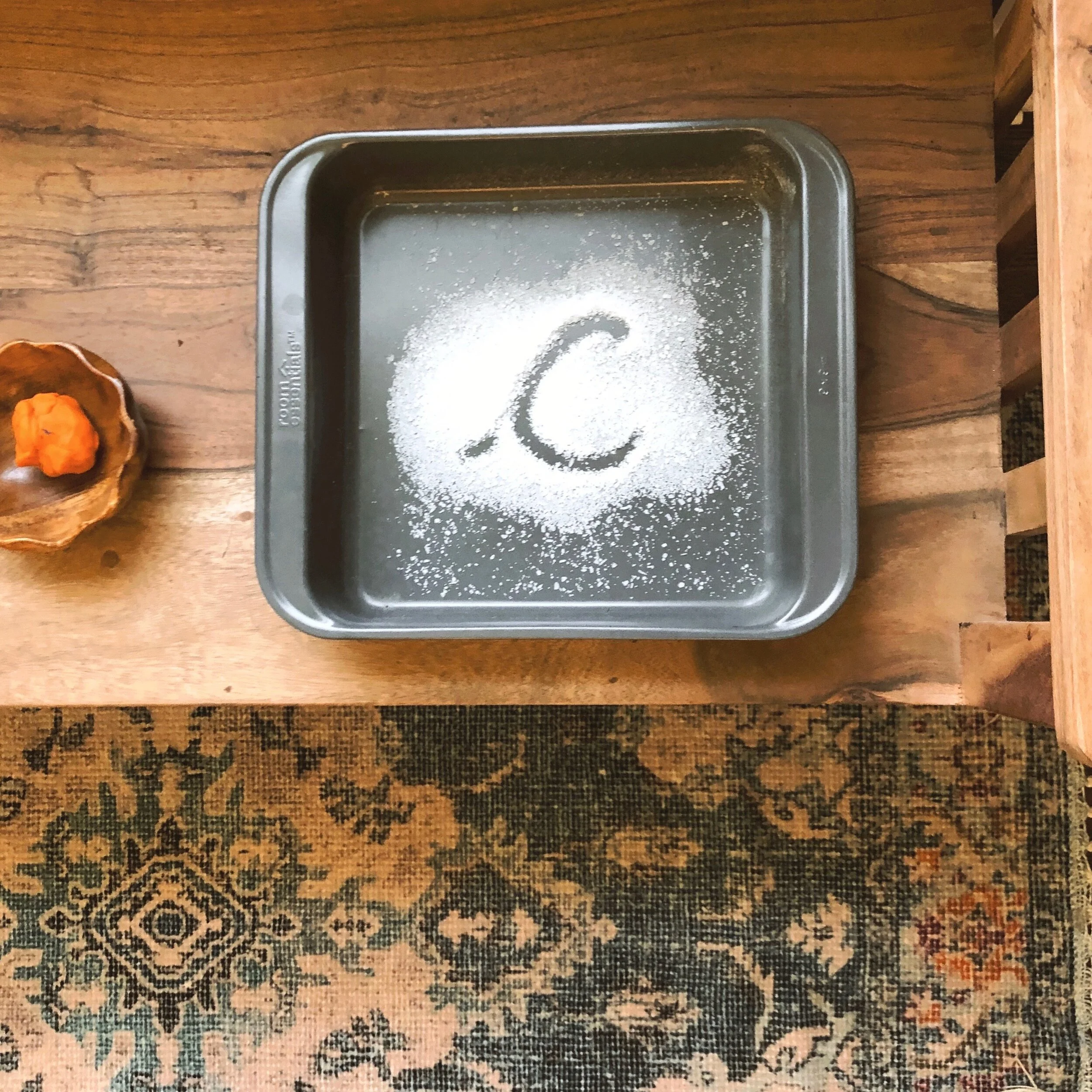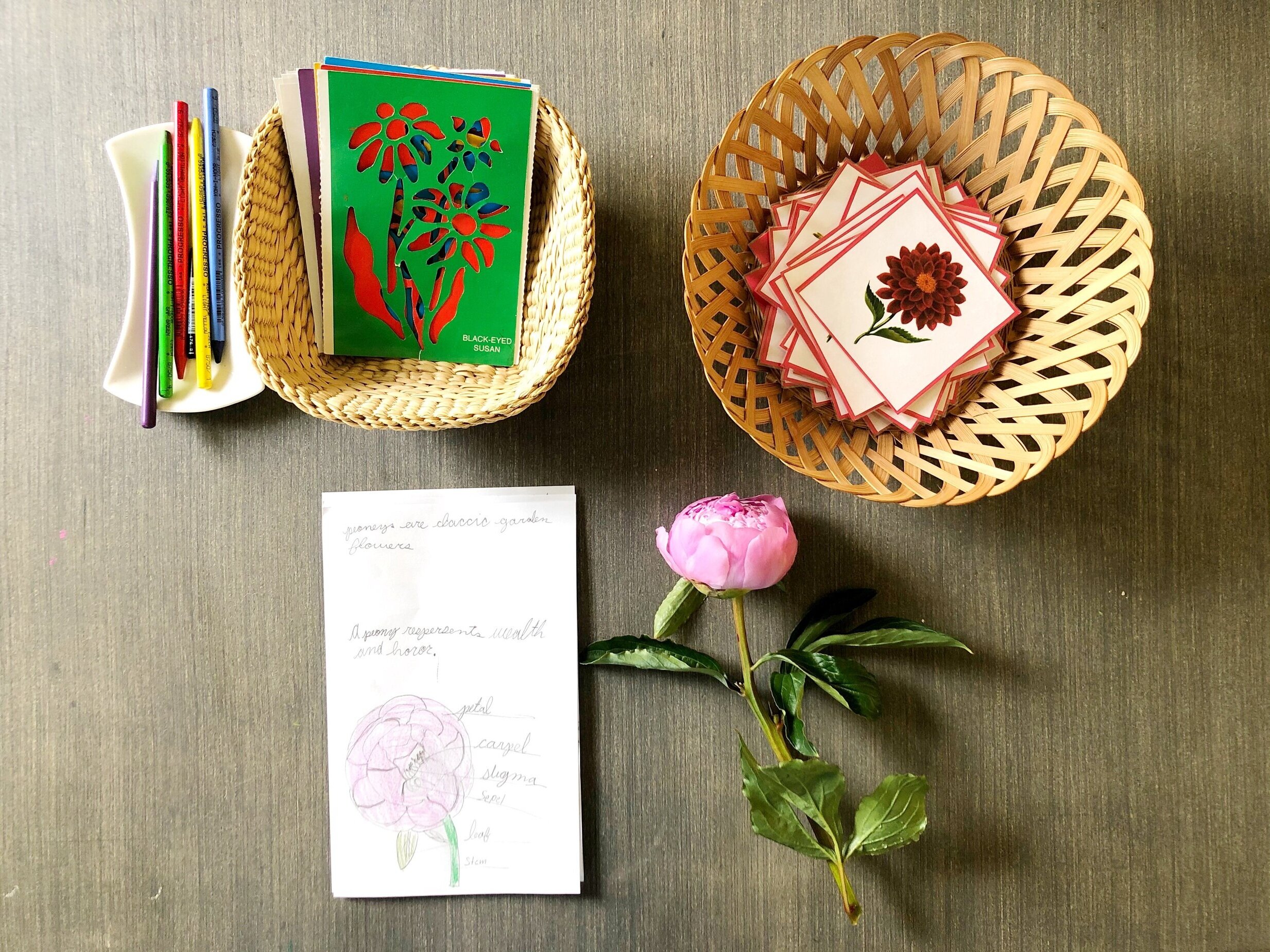Flower Study
/For the past two weeks, my girls have been studying flowers and I thought I would share a little bit about it.
I printed some flower 3 part cards for the girls. We discussed the names of the flowers and the girls sketched them and made their own flower books. I also put out some flower stencils with coloring pencils. Sloane made her own field guide, which involved drawing, writing and research. We also dissected irises from our backyard and learned about the parts.
The topic of flowers wasn’t planned. We go for hikes a lot as a family and have been observing flowers beginning to bloom on our hikes. We also have irises and peonies blooming in our backyard. Almost every time we pick up a bouquet of flowers for our home, Sloane sits down and draws them. Following a child’s interest is one of the keys to academic learning in a Montessori classroom. Endless opportunities open up for writing, reading, practical life, sensorial and math when we notice an interest a child has and follow along. “To concentrate is to be engaged in some exercise that absorbs your total attention. The exercise generally consists of work with some material that necessitates the movement of the hands. When a child is interested, all his potential is absorbed in his work. This is concentration. Once a child concentrates, all his naughtiness disappears, just as darkness disappears when a light is switched on. It is like magic.” (The 1946 London Lectures.)








